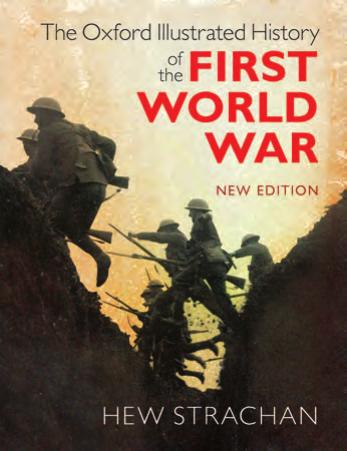The Oxford Illustrated History of the First World War by Hew Strachan

Author:Hew Strachan
Language: eng
Format: epub, pdf
Publisher: OUP Oxford
Published: 2014-01-19T16:00:00+00:00
Although the French and British developed better tanks than other armies, they were not alone in experimenting with armoured vehicles. Armoured cars lacked tracks and so were not capable of the cross-country performance of the tank, but were much faster on roads. Both the Austro-Hungarian (as here) and Russian armies used them on the eastern front in Galicia in summer 1917.
This was Falkenhayn’s insight, and it was Haig’s. The war, ultimately, would (with qualifications) prove them right. The victories of 1918 were, in the main, accomplished by artillery. The western allies, among other reasons, won the Great War because, on the battlefield, they brought to bear appropriately immense quantities of shell, developed the most effective means of delivering them, and divined what constituted feasible and profitable objectives. But 1918 was not 1916. By the fourth year of the war, guns and shells and the skills to use them were present in abundance. In 1916 they were not.
Both Falkenhayn and Haig declined to notice this qualification when they planned for Verdun and the Somme. They observed the vast accumulation of shells they were stockpiling, and deemed it unprecedented. Quite illogically, they went on to conclude that those shells would be sufficient for the large purposes they had in mind: be it the bleeding white of the French army, or the rupturing of the German line.
Falkenhayn did at least endeavour to limit the frontage which he was attacking, in order to deliver a bombardment so intense that it would extinguish life in the target area. Even then, his artillery experts questioned whether his bombardment would be intense enough for his purpose. But more important, by choosing to attack only a limited front (8 miles on the right bank of the Meuse), the German commander was having to disregard the likely response of French gunners on the left bank, outside the area under his bombardment but well within its range.
Haig, by contrast, foresaw the menace that fire from the flanks might constitute for troops trying to advance. He chose to obviate it by attacking on a 20-mile front, thereby placing his advancing infantry and cavalry in the centre beyond the range of fire from the flanks. He thereby fell into the opposite trap from that which ensnared Falkenhayn. For so wide a front, he had nowhere near the guns and shells required to subdue the enemy defences straight in front of him—so, in the event, his forces would be swept away by enemy artillery and machine guns which his bombardment had been too feeble to eliminate.
This failure by both commanders to confront the crucial issue of how much weaponry they actually possessed for the tasks it was supposed to accomplish caused the Verdun and Somme campaigns, despite apparent differences of planning and intent, to proceed with mounting similarity. Huge casualties were sustained by both sides, trivial amounts of ground changed hands (sometimes only temporarily), and neither operation advanced attacker or defender markedly towards victory.
Verdun
Download
The Oxford Illustrated History of the First World War by Hew Strachan.pdf
This site does not store any files on its server. We only index and link to content provided by other sites. Please contact the content providers to delete copyright contents if any and email us, we'll remove relevant links or contents immediately.
| Africa | Americas |
| Arctic & Antarctica | Asia |
| Australia & Oceania | Europe |
| Middle East | Russia |
| United States | World |
| Ancient Civilizations | Military |
| Historical Study & Educational Resources |
The Guns of August by Barbara Wertheim Tuchman(882)
Uniforms of the German Solider by Alejandro M. de Quesada(828)
A World Undone by G. J. Meyer(815)
The Treaty of Versailles by Michael S. Neiberg(784)
I by Anonymous(761)
Catastrophe 1914: Europe Goes to War by Max Hastings(759)
The-Odyssey by Unknown(757)
The Ghost Ships of Archangel by William Geroux(730)
They Called it Passchendaele by Lyn Macdonald(670)
8.4 by Peter Hernon(654)
1914-1918: The History of the First World War by David Stevenson(653)
The Oxford Illustrated History of the First World War by Hew Strachan(632)
Goodbye to All That (Penguin Modern Classics)(611)
August 1914 by Bruno Cabanes(595)
Seven Pillars of Wisdom : A Triumph (9780804170826) by Lawrence T. E(587)
First World War For Dummies by Seán Lang(578)
Animals In War by Jilly Cooper(572)
Defending Gallipoli by Harvey Broadbent(568)
Russia Against Napoleon: The True Story of the Campaigns of War and Peace by Dominic Lieven(566)
